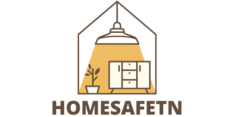As a homeowner, I’ve learned that protecting my property from hazards isn’t just about installing security systems and smoke detectors. Understanding home insurance hazards plays a crucial role in safeguarding my investment and ensuring I have the right coverage when I need it most. Through my years of experience in real estate and insurance, I’ve discovered that many homeowners overlook common hazards that could void their insurance coverage or lead to denied claims. From natural disasters to maintenance-related issues these risks can significantly impact both your home’s safety and your financial security. I’ll share essential insights about home insurance hazards and help you navigate the complex world of coverage requirements to keep your property protected.
- Home insurance hazard coverage protects against 16 standard perils including fire, lightning, windstorm, hail, and theft, with specific coverage limits for different structure types
- Natural hazards covered by standard policies include weather events, fire and smoke damage, theft and vandalism – but exclude floods, earthquakes, and normal wear and tear
- Premium rates depend on factors like construction materials, property age, safety features, claims history, and location – with coastal areas and flood zones seeing higher premiums
- Separate coverage is required for excluded hazards like floods (through NFIP) and earthquakes (through dedicated endorsements or standalone policies)
- Homeowners can reduce insurance rates by 5-25% by implementing safety improvements like security systems, smoke detectors, and water leak detection
- Regular maintenance including gutter cleaning, roof inspections, and HVAC servicing helps prevent claims and maintain lower premiums
Home Insurance Hazard
Home insurance hazard coverage protects against specific perils that damage the physical structure of a property. I’ve found that this essential component of homeowners insurance safeguards against 16 standard perils:
- Fire damage
- Lightning strikes
- Windstorm destruction
- Hail impact
- Explosion effects
- Riot incidents
- Aircraft crashes
- Vehicle collisions
- Smoke damage
- Vandalism acts
- Theft consequences
- Volcanic eruptions
- Falling objects
- Ice weight damage
- Water system malfunction
- Electrical surge impact
The coverage extends to both attached structures (garages, decks) and detached structures (sheds, fences). Here’s a breakdown of typical coverage limits:
| Structure Type | Coverage Percentage |
|---|---|
| Main dwelling | 100% of policy limit |
| Attached structures | 10% of dwelling coverage |
| Detached structures | 10% of dwelling coverage |
| Personal property | 50-70% of dwelling coverage |
This protection differs from liability coverage by focusing exclusively on physical damage from covered perils. I’ve noted that standard hazard insurance excludes specific events:
- Flood damage
- Earthquake destruction
- War consequences
- Nuclear accidents
- Intentional damage
- Normal wear and tear
Coverage activates when a named peril causes direct physical damage to insured property. I recommend documenting pre-existing conditions through photos or videos to streamline future claims processes.
Common Hazards Covered by Home Insurance
Standard home insurance policies protect against multiple hazards that can damage residential properties. Here’s a detailed breakdown of the most frequent covered perils I encounter in insurance claims.
Natural Disasters and Weather Events
Wind damage from storms, lightning strikes, heavy snow loads, hail impact, and falling trees constitute the primary natural hazards covered by home insurance. A typical policy covers:
- Wind-driven rain damage through storm-created openings
- Lightning strikes causing electrical surges or fires
- Ice dam formation on roofs during winter months
- Tree damage from storms or high winds
- Hail impact on roofing materials and exterior surfaces
Fire and Smoke Damage
Fire represents one of the most destructive covered perils in home insurance policies. Coverage includes:
- Structural damage from flames
- Smoke penetration into walls and fixtures
- Heat damage to adjacent rooms
- Electrical fires from faulty wiring
- Water damage from firefighting efforts
- Soot cleanup and decontamination
Theft and Vandalism
Property crimes remain a significant concern for homeowners, with insurance covering various criminal acts:
- Break-in damage to doors, windows or locks
- Stolen personal belongings or valuables
- Graffiti removal and exterior repairs
- Broken windows from attempted entry
- Damage to landscaping during theft
- Replacement of security systems after burglary
Coverage limits and deductibles apply to each type of hazard, with specific dollar amounts varying by policy and insurance provider.
Understanding Hazard Insurance Premiums
Hazard insurance premiums represent the cost of protecting a home against covered perils. I’ve analyzed various factors that determine these rates based on my experience in the insurance industry.
Risk Factors That Affect Rates
Insurance companies calculate premiums based on specific property characteristics:
- Construction materials (brick, wood, steel)
- Age of essential systems (electrical, plumbing, HVAC)
- Safety features (fire alarms, sprinkler systems, security devices)
- Claims history within the past 5 years
- Credit-based insurance score ranging from 300-850
- Deductible amount selection ($500-$2,500)
| Risk Factor | Average Premium Impact |
|---|---|
| New roof | -15% to -20% |
| Security system | -5% to -10% |
| Prior claims | +10% to +40% |
| Low credit score | +20% to +50% |
- Distance from fire stations (less than 5 miles optimal)
- Proximity to coastlines (affects wind damage risk)
- Flood zone designation (Zones A, V, X)
- Crime rates in the neighborhood
- Local building codes enforcement
- Natural disaster frequency in the region
| Location Factor | Premium Range Increase |
|---|---|
| Coastal areas | +25% to +100% |
| High-crime zones | +10% to +30% |
| Flood zones | +15% to +85% |
| Rural locations | +5% to +25% |
Excluded Hazards and Additional Coverage Options
Standard home insurance policies exclude several significant hazards that require separate coverage options. These exclusions create coverage gaps that homeowners must address through additional policies or endorsements.
Flood Insurance Requirements
Flood damage requires separate flood insurance coverage through the National Flood Insurance Program (NFIP) or private insurers. Properties in FEMA-designated flood zones with federally backed mortgages must maintain flood coverage, with premiums ranging from $400 to $2,000 annually. Coverage includes:
- Building property coverage up to $250,000
- Personal contents coverage up to $100,000
- Alternative living expenses during repairs
- Debris removal after flooding events
- Foundation wall repairs from water damage
Earthquake Protection Add-ons
Earthquake insurance serves as a dedicated endorsement or standalone policy to protect against seismic damage. Coverage options include:
- Dwelling protection for structural damage
- Personal property coverage from $50,000 to $200,000
- Loss of use coverage up to $100,000
- Engineering costs for foundation repairs
- Debris removal services post-earthquake
| Factor | Impact on Premium |
|---|---|
| Building Age | 10-30% increase for older structures |
| Construction Type | 15-40% variance based on materials |
| Distance from Fault Lines | 20-50% higher in high-risk zones |
| Retrofitting Measures | 10-25% discount for reinforcements |
How to Reduce Home Insurance Hazard Rates
Insurance companies offer lower rates to homeowners who take proactive steps to minimize risks. I’ve identified specific measures that effectively reduce hazard insurance premiums through safety improvements and regular maintenance.
Home Safety Improvements
Home safety features decrease insurance rates by 5-25% based on the implemented measures:
- Install a monitored security system with cameras and motion sensors
- Add smoke detectors and carbon monoxide alarms on every floor
- Use smart water leak detection systems connected to automatic shut-off valves
- Upgrade to impact-resistant windows and doors rated for high winds
- Install lightning protection systems with surge suppressors
- Replace standard locks with deadbolts and smart locks
- Add fire sprinkler systems in high-risk areas
- Clean gutters and downspouts every 3 months
- Inspect the roof twice yearly for damaged shingles or flashing
- Test sump pumps monthly during rainy seasons
- Trim trees within 10 feet of the house structure
- Check plumbing connections every 6 months for leaks
- Service HVAC systems in spring and fall
- Update electrical wiring over 30 years old
- Replace washing machine hoses every 5 years
- Seal foundation cracks immediately upon discovery
- Document all maintenance with photos and receipts
| Safety Improvement | Average Premium Discount |
|---|---|
| Security System | 5-15% |
| Fire Protection | 10-20% |
| Water Detection | 3-8% |
| Impact Windows | 5-10% |
| Smart Home Tech | 2-5% |
Home insurance hazard coverage provides vital protection for your biggest investment. I’ve seen firsthand how understanding your policy’s coverage and exclusions can make a significant difference when disaster strikes. By taking proactive steps to protect your home and maintain proper coverage you’ll be better prepared for unexpected events. For instance, installing a BAC-RAH roof access hatch can improve safety and accessibility for roof maintenance, potentially reducing risks and helping you stay ahead of hazards that could affect your coverage.
Remember that standard policies don’t cover everything. I strongly recommend reviewing your coverage regularly and considering additional protection for excluded perils like floods and earthquakes. Smart investments in home safety features and regular maintenance won’t just protect your property – they’ll also help reduce your insurance premiums over time.

